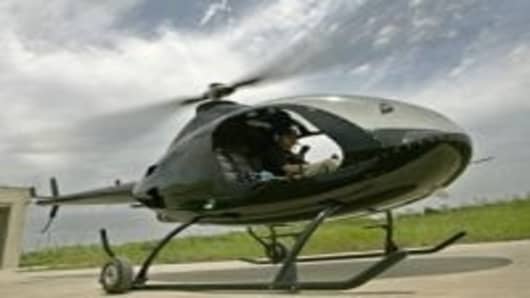“For us, a workweek is 80 hours or more. So you know what we need? Fast,” said Mr. Guan, a gold-necklaced, yacht-sailing titan who made a fortune as a trader. To relieve the stress of making vast sums of money, he said, there is nothing like zipping around in a copter.
“Only then can I truly relax,” he said. “It’s that simple.”
If only it were legal, too.
Mr. Guan and his friends are black fliers — part of a minuscule group of wealthy Chinese who fly, quite literally, in the face of the law. The first Chinese rich enough to own their own aircraft, they have collided in midair with the Chinese military, which controls the country’s airspace and never contemplated such a fantastic development, much less authorized it. Just asking for permission to take off can involve days of bureaucratic gantlet-running, and still end in rejection.
Getting permission to land can be another hassle altogether.
So black fliers take to the air clandestinely, flitting where the authorities are unlikely to notice or care, occasionally causing havoc on the ground below, risking fines that would send an average Chinese to the poorhouse but which, for most of them, do not have much of a deterrent effect.
“It’s like this — your family, your wife, won’t let you go out and pick up girls. But you went out and did it anyway,” Mr. Guan said. “Secret flying is like secret love. You do it, you don’t tell people about it.”
Just how many pilots make black flights (in Chinese, hei fei) is unclear, but their number is assuredly tiny. In the United States, the Federal Aviation Administration says that nearly 237,000 general aviation aircraft were actively flying in the country in 2010. By comparison, experts say, China has perhaps 1,000 registered private aircraft.
No one knows how many of those make black flights. But Cao Wei, who runs a Beijing company that leases small aircraft and trains pilots, says there are several hundred unregistered aircraft, and all of those do. A large percentage of aircraft that make black flights, he said, are helicopters, much favored because they do not need a runway.
“You don’t need much space, and you can have a flexible flight plan,” he said. “Say your home is a few kilometers from the golf course — you just hop in your helicopter, fly low, and go there. It’s very difficult to discover.”
Perhaps so, but hei fei pilots nevertheless have gotten into more than their share of scrapes. Several have been mistaken for UFOs while aloft over major cities, including a helicopter pilot whose evening excursion last July over the airport in Hangzhou, north of Wenzhou, tied up a score of commercial jets on the ground. A rich pilot in Dongguan, a south China metropolis, made national headlines in 2006 when he used his helicopter to pursue and subdue thieves who had stolen his luxury car.
More recently, an especially unlucky pilot wandered onto air traffic controllers’ radar screens between Shanghai’s two major airports during last year’s Shanghai International Expo, which, like most Chinese spectacles, was smothered in a blanket of anti-terrorism, anti-dissident security.
Most brushes with the authorities are less dramatic. Mr. Guan was apprehended in March 2010 after he and other hobbyists flew two helicopters around Wenzhou without government approval. The penalties ranged up to 100,000 renminbi, or about $15,400, but “we were able to talk them down to 20,000,” he said.
Punished but hardly chastened, Mr. Guan keeps his American-made Robinson copter in a quasi hangar at his yacht club, on the banks of the milky Ou River some 30 minutes from downtown Wenzhou. For now, he limits his flights of fancy to the airspace over the river, where he is unlikely to draw much attention.
Theoretically, he and others can fly wherever they wish. Practically, the obstacles are daunting.


